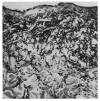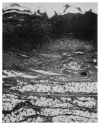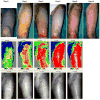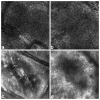Thermal injury of skin and subcutaneous tissues: A review of experimental approaches and numerical models
- PMID: 27931765
- PMCID: PMC5459687
- DOI: 10.1016/j.burns.2016.11.014
Thermal injury of skin and subcutaneous tissues: A review of experimental approaches and numerical models
Abstract
Thermal injury to skin and subcutaneous tissue is common in both civilian and combat scenarios. Understanding the change in tissue morphologies and properties and the underlying mechanisms of thermal injury are of vital importance to clinical determination of the degree of burn and treatment approach. This review aims at summarizing the research involving experimental and numerical studies of skin and subcutaneous tissue subjected to thermal injury. The review consists of two parts. The first part deals with experimental studies including burn protocols and prevailing imaging approaches. The second part deals with existing numerical models for burns of tissue and related computational simulations. Based on this review, we conclude that though there is literature contributing to the knowledge of the pathology and pathogenesis of tissue burn, there is scant quantitative information regarding changes in tissue properties including mechanical, thermal, electrical and optical properties as a result of burns that are linked to altered tissue morphology.
Keywords: Burn imaging; Burning experiment protocols; Review; Soft tissue burns; Thermal injury mechanisms; Thermal injury simulations.
Copyright © 2016 Elsevier Ltd and ISBI. All rights reserved.
Conflict of interest statement
Conflicts of interest: none
Figures
















References
-
- American Burn Associations. Burn Incidence Fact Sheet. 2016.
-
- Deitch EA, Wheelahan TM, Rose MP, Clothier J, Cotter J. Hypertrophic burn scars: analysis of variables. J Trauma. 1983;23(10):895–898. - PubMed
-
- Watts AMI, Tyler MPH, Perry ME, Roberts AHN, McGrouther DA. Burn depth and its histological measurement. Burns. 2001;27(2):154–160. - PubMed
-
- Eisenbeiß W, Marotz J, Schrade JP. Reflection-optical multispectral imaging method for objective determination of burn depth. Burns. 1999;25(8):697–704. - PubMed
-
- Hoeksema H, Van de Sijpe K, Tondu T, Hamdi M, Van Landuyt K, Blondeel P, Monstrey S. Accuracy of early burn depth assessment by laser Doppler imaging on different days post burn. Burns. 2009;35(1):36–45. - PubMed
Publication types
MeSH terms
Grants and funding
LinkOut - more resources
Full Text Sources
Other Literature Sources
Medical

